
Choosing a good article design is essential for a good SEO: The longer the time spent on the website, the lower the rebound rate, the higher the satisfaction. We have analysed eight designs that stand out and deliver all the best practices to make your website a model of its kind. Detailed explanations in this guide that will inspire you and complete our post on updating old articles.
Summary
- Why good article design is essential for your SEO in 2020
- The magic recipe for a successful blog article
- Example 1: The New York Times (US)
- Example 2: The files of La Libre (Belgium)
- Example 3: VRT (Belgium)
- Example 4: Fig Data (France)
- Example 5: Neil Patel (US)
- Example 6: Brian Dean (US)
- Example 7: C-marketing (Belgium / France)
- Example 8: IntoTheMinds (France / Belgium)
Why good design is essential for a blog article
I’ll leave the technical aspects aside (this is not my cup of tea) and try to explain SIMPLY why it’s vital to stylise your blog posts.
Do you know how your ranking in Google is determined? So, of course, there is the authority of your website, the length of your content, but there is also the bounce rate, the backlinks, the time spent on the site. Maybe you don’t realise it, but the design of the item (its format,) is a factor that plays a role in all this. Imagine a breathless piece of text. Who wants to read this? 100% rebound rate guaranteed, and no one will want to recommend it to other readers (so no backlinks).
A suitable article format is an assurance of satisfying the visitor by:
- allowing him to find the information he is looking for quickly (google will reward you for that)
- entertaining him with a different (but effective) presentation
- keeping him on your site for more extended periods
80% of Internet users do not scroll
For 13 years, I have written more than 3500 articles on this blog and have optimised my practices as I go along. My blog articles have, therefore become more productive. In today’s article, I analyse eight designs of articles that I find terrific. The 8th is our ?, and as you can see, there has been quite an evolution in 10 years.
The magic recipe for a winning article
In the years that I have been writing (myself) and being deeply involved in the SEO of my blog, I have learned a lot. I hope my competitors don’t read this because I’m going to tell you my little secrets:
- Use numbers: people love numbers, stats. It’s easy to digest and will make your article credible.
- Don’t forget the summary: no one scrolls anymore. You have to go directly to the news. So too bad for those who forget to include a summary.
- Write a header: the header is what will keep the reader on the page. Spend time writing it well to convince him to read the article.
- Mix the formats: who said you should only put text? Let your readers breathe by inserting images, videos, animated gifs and of course, podcasts.
- Provide inserts: to make the information digestible, make inserts with small summaries. Feel free to repeat the info by summarising. It will also break the post into small but more manageable sections.
- Use colour codes: there is nothing worse than an article written in black. Use a style sheet (CSS file) to define flows
6 practical tips for a successful blog article
- Use numbers
- Include a summary
- Write a header that will inspire
- Alternate content formats (video, podcast, images) with text
- Use inserts to highlight content
- Use colour codes
It is now time to move on to the demonstration.
Example 1: The New-York Times

Good ideas to remember: the large image (which is also responsive) and the “list” format at the bottom of the article (where recipes are displayed) that alternates images with short blocks of text
To be reviewed: too much text at the beginning, which gives a rather uniform appearance to the ensemble.
Example 2: The files of La Libre Belgique
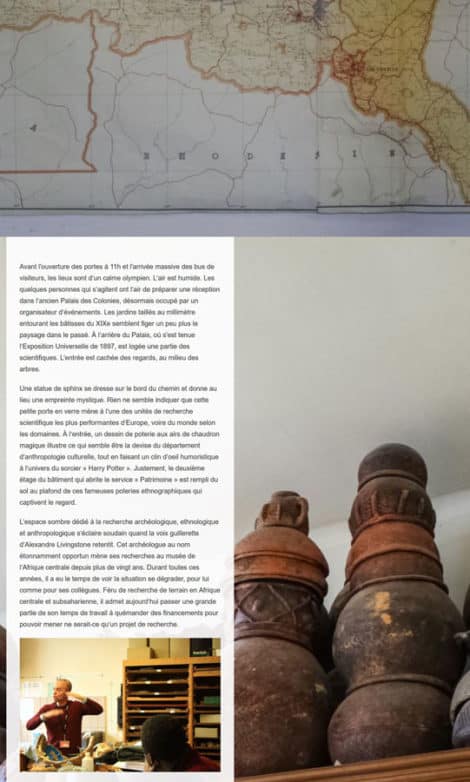
Good ideas to remember: the large image, the use of video and audio elements, the division by sections
To review: too many multimedia features, the background used for Soundcloud podcasts that breaks the overall appearance.
Example 3: Leonardo da Vinci exhibition file on the VRT website
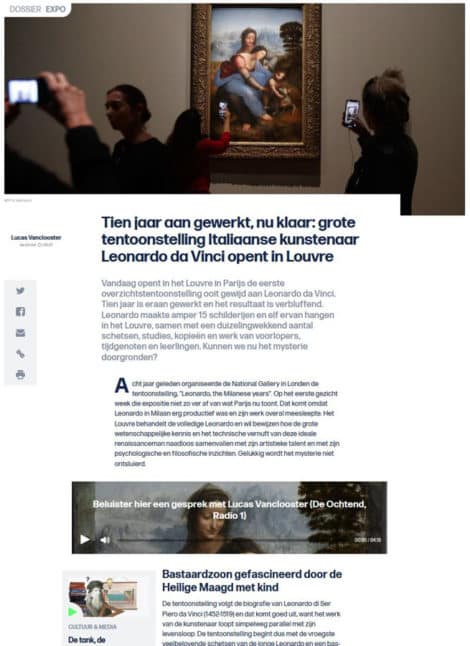
It is almost flawless.
Good ideas to remember: all of them! The intelligent integration of audio and video media in reasonable quantities, the alternation of text and illustrations and the resulting breakdown of the article.
To be reviewed: by cutting the text into small blocks, it is sometimes too fragmented. It also lacks a summary to find the way in this very long article (in size but not in words).
Example 4: Fig Data
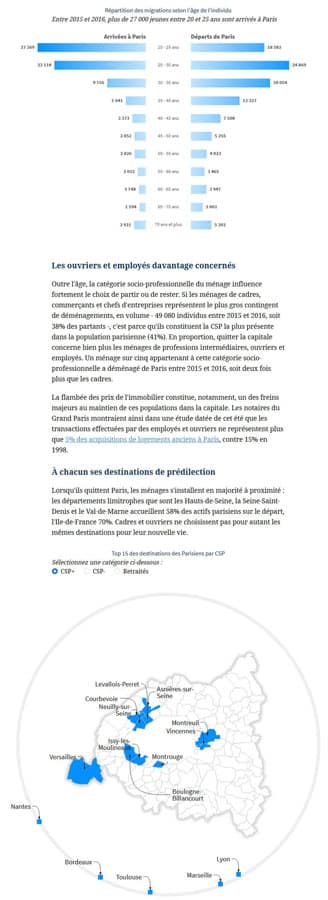
What I like, first of all, is the harmony of the colours. The graphic charter of Le Figaro is on the blues, and the computer graphics highlighted in the article are all tinted blue. There is more text than in the previous example of the VRT. This text is aired using graphs and tables. On the other hand, the article begins with a large block of text that is broken only by a piece of highlighted text (one wonders if it is a title or a quotation).
Good ideas to remember: The graphic design that is in a single tone. The good alternation between text and illustrative elements (graphs, tables), the “source and methodology” part at the end of the article which is well highlighted
To be reviewed: too much text at the beginning of the article, the structure of the article which is difficult to understand
Example 5: Neil Patel

Good ideas to remember: put your important hyperlinks / a video at the beginning of the article, use a numbering so that the reader can easily understand the structure of the article
To review: a little lack of fun nonetheless and I find that by putting too many illustrations we lose in reading efficiency
Example 6: Brian Dean

The guide is structured in blocks, each with a different colour (practical to find your way around and navigate easily). The intro is clear and punchy, and you get directly to an illustrated summary that is a model of its kind. The chapter structure is straightforward, and you can both understand the complete guide and teleport instantly to the part that interests you.
The chapters alternate between illustrations and text; each chapter also begins with a summary. The different formats (videos, graphics) are present. The videos start automatically (auto-play), which adds playback time to the YouTube channel of the guru. The huge advantage of this type of design is that you can write very long articles (remember that Google loves long articles that can serve as a reference) without sacrificing reading comfort. The disadvantage is that the time required to write such a guide is infinitely longer than for an excellent article (Brian Dean only publishes one article per month) and developing a specific model will necessarily cost you quite a bit of money.
Good ideas to remember: all of them! It’s the best design I know.
To be reviewed: can we not make it a little more straightforward so that development costs can be reduced?
Example 7: C-Marketing

Good ideas to remember: the very practical detailed summary, inserts, alternating text and video
To be reviewed: the different colours of the text
Example 8: IntoTheMinds
To all lords, all honour. I still want to show that I am putting my advice into practice. You can see below the difference between an article I wrote in 2009 (10 years ago!) and an article from 2016 that I updated in 2019 (see here for more details). From the block of text that was impossible to read in 2009, we moved on to something airier. I highlight our market research guide from the beginning of the introduction, and then I start directly with the summary. Then we get to the heart of the matter and to break the text a little between two paragraphs I added what I call a “summary image”, that is to say, a jpg file that summarises the main points of the article. With a proper file name, this allows me to also appear in the image search results. You will even notice the apple green insert, which will enable me to highlight a particular point.
Good ideas to remember: all of course! More seriously, I like the summary and the ” summarised images ” that we are, to my knowledge, the only ones to do.
To be reviewed: still no videos in my articles (we’ll soon start working on it, it’s a promise), it lacks quotations and an OMG design like the VRT’s one.
Illustrative image: credits Shutterstock


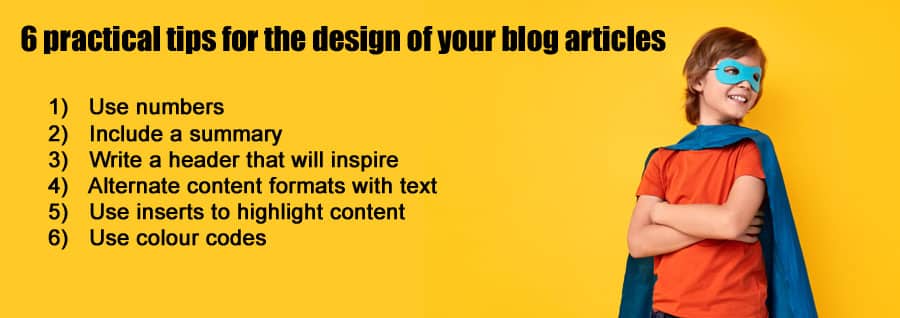

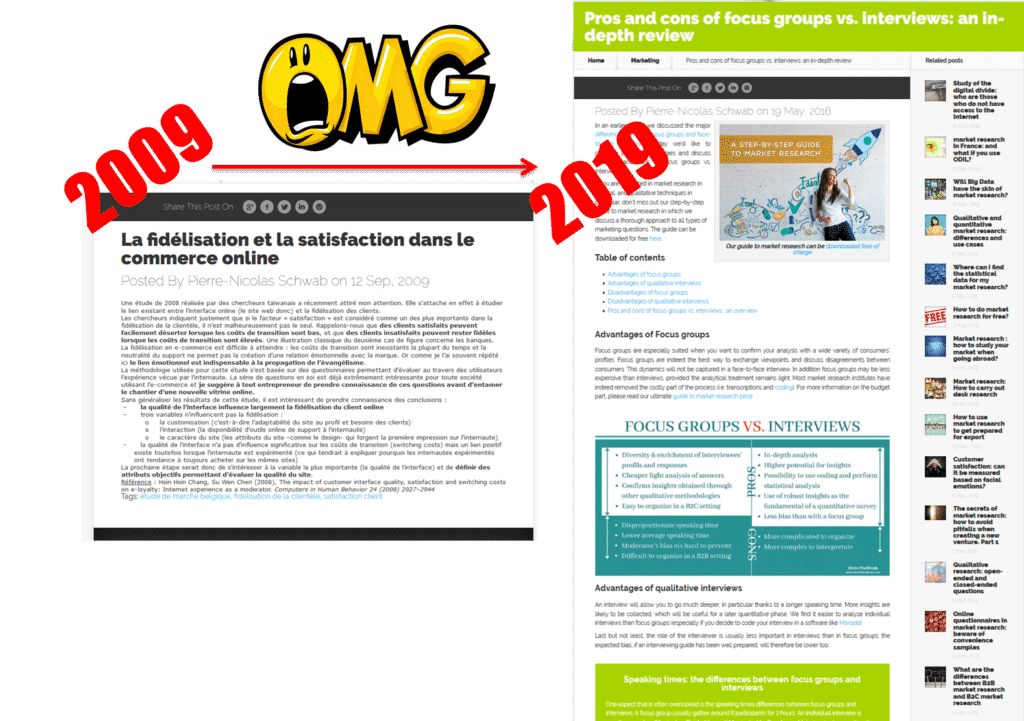
![Illustration of our post "75% of backlinks come from translations [Research]"](https://5cc2b83c.delivery.rocketcdn.me/app/uploads/langues-langages-talen-120x90.jpg)
![Illustration of our post "Early retirement: what do the French think? [Survey 2023]"](https://5cc2b83c.delivery.rocketcdn.me/app/uploads/retraite-pension-money-argent-120x90.jpg)



